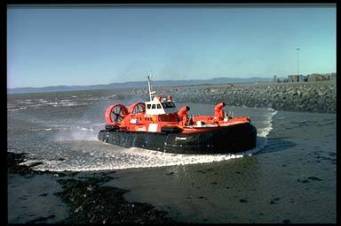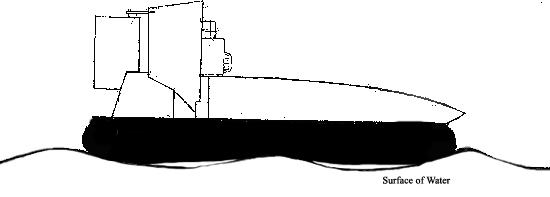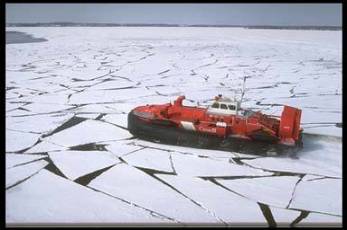
| NAME |
|
A hovercraft is able to glide or slide easily because there is so little contact friction with the surface it's hovering over. Still, there are forms of friction which come into play, and these frictional forces are usually called drag. Drag occurs in several forms, the most familiar being wind resistance, or form drag, which is created by the hovercraft having to push aside air as it moves forward. This effect increases more and more as the hovercraft’s speed increases. Streamlining the shape of the hovercraft decreases the wind resistance, resulting in higher top speeds. While wind resistance is always present, it becomes much more of a problem at speeds of 30 mph [48.3 km/h] and above. Since Discover Hover hovercraft usually don't travel faster than 30 mph [48.3 km/h], wind resistance is not as noticeable as on other light hovercraft.

A hovercraft operating over water is subject to three other forms of drag not experienced on solid surfaces: wave drag, skirt drag, and impact drag. Wave drag (called hump drag at low speeds) occurs when lift air under the hovercraft pushes down on the surface of the water. Some of the water is displaced from under the hovercraft, creating a depression in the water. The total weight of the water displaced is equal to the weight of the hovercraft and pilot, according to Archimedes’ Principle. As the hovercraft starts moving forward, the depression moves with it and forms a small wave in front of the bow. This causes the bow (front of hovercraft) to rise and the stern (back of hovercraft) to sink a little. The hovercraft is, in effect, trying to fly "uphill". As the hovercraft increases speed, the bow wave increases in size. Eventually, the hovercraft will reach a speed where it's moving faster than the wave and "climbs" over it. Called planing speed, it is commonly referred to as "getting over the hump". At this point the hovercraft will accelerate rapidly. The moment before planing speed is reached, wave drag is at its greatest. When traveling above planing speed, the lift air under the hovercraft doesn't have enough time to depress the surface of the water and the wave drag decreases dramatically.

Wave drag caused by depression in the water’s surface by the air cushion
Skirt drag occurs when the skirt contacts the surface of the water. This is worse when running over small waves.

Sketch by
J. Benini
Impact drag happens when the skirt or hull strikes large waves on turbulent water or other objects, such as ice flows or ridges.
